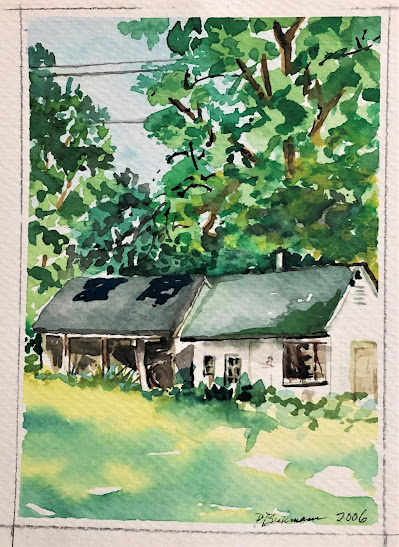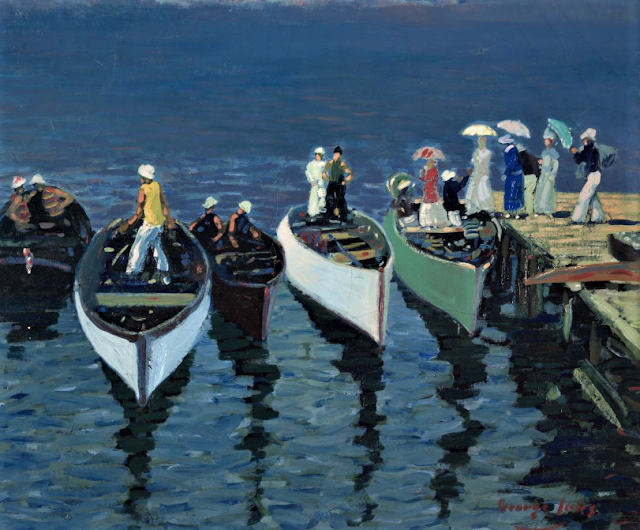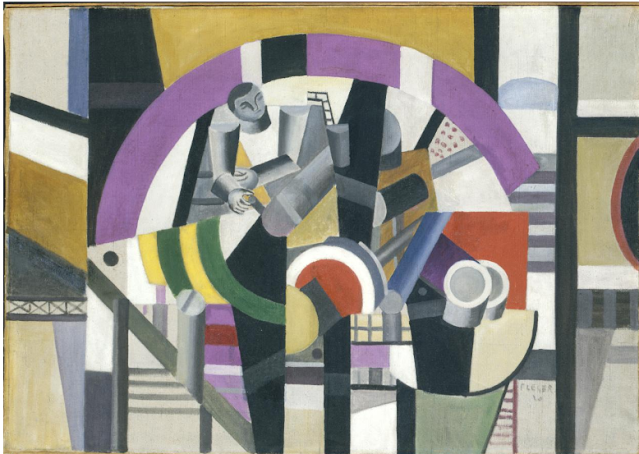Patricia Beckmann, "Two Buildings" and "Black River"

My apology's to any readers as I am coming in a little late on Monday. This week is my 150th blog post, so in order to celebrate, I thought I would show you a couple of my own works. The first is a small watercolor done on site some years ago, but I always liked it. Back then a group of friends painted together every Wednesday. Great weather was spent in locations such as this, outdoors. I can't remember the exact location, but it doesn't matter. To me this is simply two small out buildings sitting in the sun. My memory is that it was morning, hence the yellow/green foreground. The three lines stretching between the trees are probably power lines. I know the painting was done in an hour or less, one seating and I have always liked it's freshness, which is why I kept it. Now here is something else entirely! This is a mixed media work, often considered a collage. It is made out of paper and paint. It has no special meaning, only my a


